
views
Developing a Gym Routine
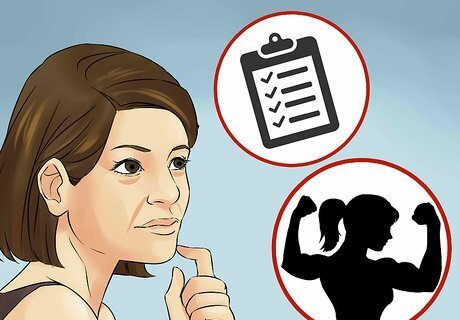
Find a good training program. You should develop a training routine that fits your goals. There are a number of ways to tailor an exercise routine to best fit your lifestyle. The best option would be to hire a trainer to put together a program specifically tailored to your needs. Unfortunately, this can be expensive. There are many training programs you can buy online these days but again, they can be somewhat expensive if you are on a limited budget. Look online and at your local library for information about resistance training programs. You can use weights or put together a good body weight program for yourself. You are the expert when it comes to your body!
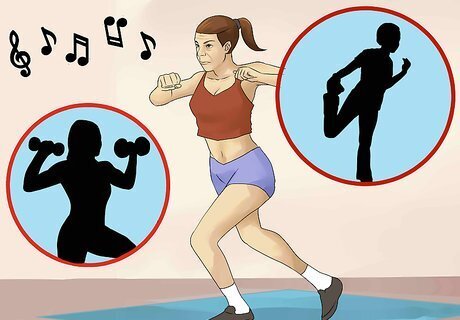
Work out to a routine that works for you. Depending on the type of workout routine you choose to do, you should create a workout routine that you will follow. The CDC recommends that you get 150 minutes of moderate-level activity or 75 minutes of high-intensity activity per week to maintain your current weight. Aim to combine aerobic exercise with at least two days of muscle-building exercise, like weight-lifting, each week. Don’t forget to warm up and cool down. To avoid injury, you should warm up your muscles before you start to vigorously exercise. This may include 10 – 15 minutes of walking or stretching. Repeat this to cool down your body after your exercise. This will help reduce muscle soreness.
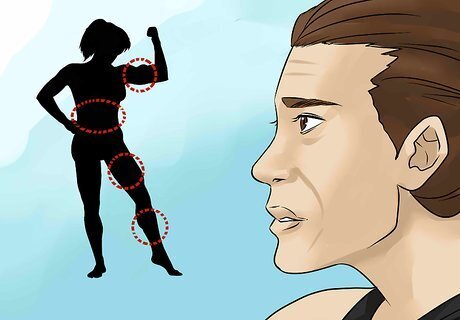
Work different muscle groups each time you exercise. Ideally, you want to be training your entire body and not just one area. Make sure your routine focuses on each area of your body. Switch which muscle groups you are working in between sets or days to help give your body a chance to rest. Work out at least three days a week. You want to make sure your are exercising your muscles at least three days a week and that you give yourself rest days. Rest days will help your muscles relax and recover in between training.
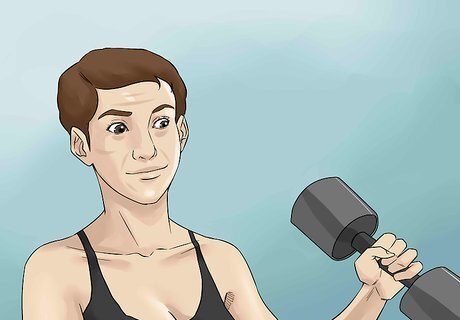
Begin weight training. Lifting weights is a great way to build strong muscles and to help tone your body. However, starting a routine can be daunting, especially for beginners. There are a few tricks to help you get started. Research machines and weights. Before you jump into using every machine at the gym, ask for a run-down on the functions of each machine. Be sure to ask what muscle groups the machine targets so you can develop a routine that works for you. Be consistent. Once you have started to work out, be consistent for at least two to four weeks. Try to work out on the same days or times to develop a routine. Develop good form. You do not want to start lifting a ton of weight right out of the gate. Practice forms before you add more weight to your routine. EXPERT TIP Laila Ajani Laila Ajani Fitness Trainer Laila Ajani is a Fitness Trainer and founder of Push Personal Fitness, a personal training organization based in the San Francisco Bay Area. With over 10 years as a trainer and exercise specialist, Laila has expertise in competitive athletics (gymnastics, powerlifting, and tennis), personal training, distance running, and Olympic lifting. Laila is certified by the National Strength & Conditioning Association (NSCA), USA Powerlifting (USAPL), and she is a Corrective Exercise Specialist (CES). Laila Ajani Laila Ajani Fitness Trainer Women shouldn't worry that weight training will drastically change their bodies. Due to hormonal differences between sexes, weight training is unlikely to cause significant muscle mass change in women. You'll unlikely get "bulky" unless you're overdoing it at the gym. Embrace weight training for improved fitness.

Consider a bodyweight routine. A bodyweight routine does not involve any equipment. This routine relies solely on your own body weight. Exercises include push ups, squats, sit ups, pull-ups. This exercise can be helpful as it can be done comfortably in your own home without paying gym fees. These types of exercises can have the same health benefits as using weights or machines.
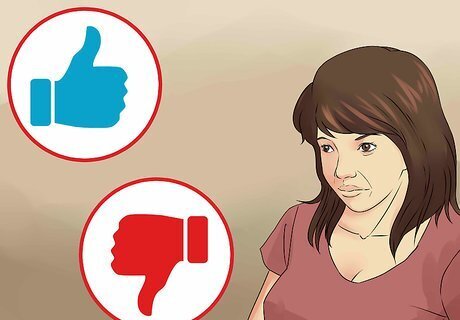
Understand the pros and cons building muscle over the age of 45. While maintaining a healthy lifestyle can have many benefits, safety may be an issue. Studies have shown the working out after age 45 can help reduce and even reverse any age-related muscle loss. Lifting weights and gaining muscle can even help with heart disease. Each year, over 88,000 women between the ages of 45 – 65 have heart attacks. You have to consider safety when lifting weights. Not having proper form or trying to lift too much at one time may cause injury such as broken bones or torn muscles. When first starting out, it is best to consult a professional.

Examine the different types of weightlifting. Traditionally, there are five types of weightlifting programs: bodybuilding, powerlifting, circuit training, isometric, and high-volume training. Each of these training types of both benefits and downfalls. Bodybuilding — This routine solely focuses on building muscle mass. You will be focusing on one muscle group per workout. Typically, bodybuilders lift every day. The cons of this is that, while your muscles are getting bigger, you might not be gaining additional strength. Powerlifting — Like bodybuilding, powerlifting helps to gain muscle mass. However, powerlifting focuses on lifting the heaviest weights possible rather than focusing on appearance. You may be lifting heavy weights for shorter reps. Circuit Training — Circuit training will put your body through a routine of short workouts such as 20 box jumps, 20 jumping jacks, and 10 pushups in quick succession. This will help your body burn fat and keep your heart rate up. This, however, might not help you build muscle mass. Isometric — This helps builds stamina. Isometric training allows you to hold a weight in a certain position without going through a range of motion. This will probably not help you burn fat as quickly as circuit training, but will help you with stamina. High-volume training — This type of training helps the body achieve as many sets as possible in a workout. For example, you will try and achieve as many pushups as you can in a one minute period. This can be intense and is not necessarily recommended for beginners. Like circuit training, it can help to burn fat.
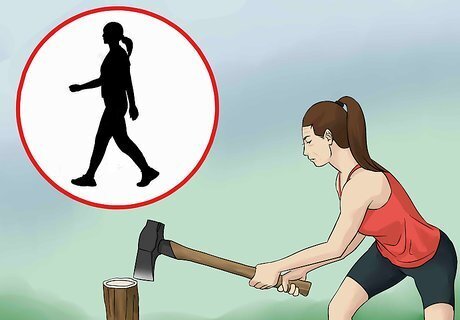
Work out at home. Some daily activities can be an effective form of exercise. According to the CDC, doing 30 minutes of heavy yard work (such as chopping wood or raking leaves) can burn around 220 calories. Simply walking (4.5mph) for 30 minutes can burn around 230 calories.
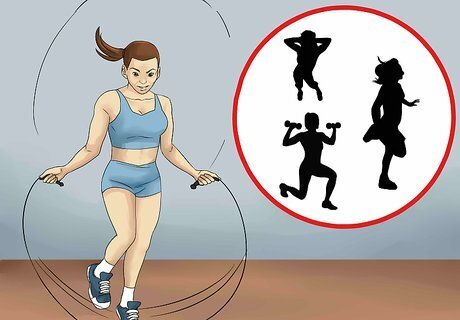
Get your heart pumping with cardio training. Cardio routines vary in their intervals and intensity. These workouts are designed to build endurance but are not necessarily designed for gaining muscle mass. There are many types of cardio programs you can try. Find one that you like so you are more likely to keep at it! Try biking, hiking, jogging, swimming, rowing, or dancing. Cardio helps you use oxygen more efficiently to pump blood to your organs. This will increase your heart rate, and help you burn calories. Remember that you should not just do cardio alone, as the muscle mass and improved bone density will come from resistance training.

Take the stairs. One simple way to add cardio to your day is to use the stairs instead of taking an elevator. Climbing stairs will get your heart pumping and also help to tone your legs and glutes.
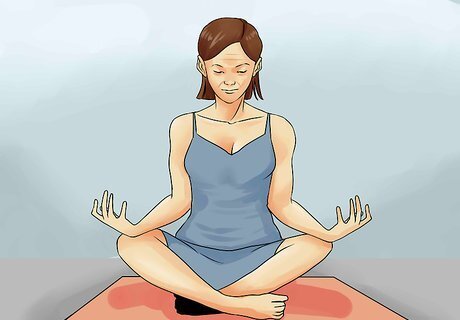
Relax and recover with yoga. It is important to let your body rest at times so that your muscles can repair themselves. You do not want to overexert yourself and cause harm to your body. Doing low-impact workouts such as yoga is a great way to stay active but to recover from more intense workouts.
Maintaining a Routine
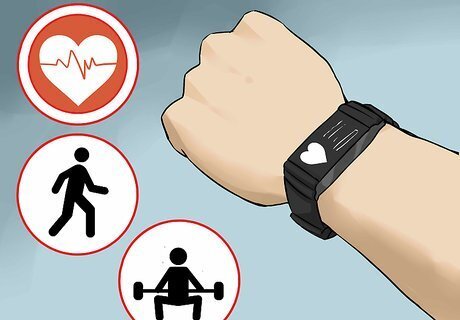
Plug in with fitness technology. Advances in technology have really made a difference in the way we work out. You can purchase watches that can track your heart rate, blood pressure, and the level of oxygen in your blood. You can wear technology that can track how long you run, calories consumed, or weight lifted. If you’re a techie, these new piece of wearable technology may help you stay determined.
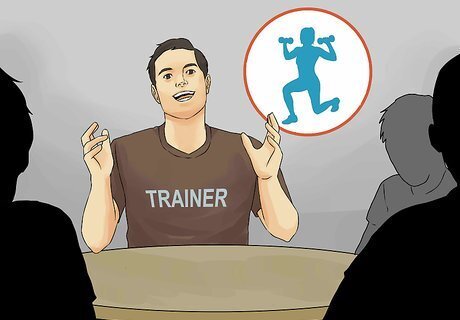
Join a fitness forum. There are other people on the same journey as you! Statistics show that people are more likely to stick with a fitness routine if they are involved in a like-minded community..

Write a blog and take pictures. To keep motivated, take progress pictures of the muscle groups you want to work on. Write a blog to help keep a log of your updates. It is very motivating to see progress!

Get others involved. Get your community involved with your journey. Meet up with locals in public places like the local library. Getting others involved can help you keep your energy and stay motivated in your fitness journal.
Making Healthy Life Choices

Stop smoking. Smoking can cause a number of disease that can hinder your health goals. It is a deadly habit, and one that should not be continued. Quitting smoking will help you stop the damage that tobacco is doing to your body, and will help you regain lung capacity for easier breathing.

Talk with your doctor. Before you begin any sort of exercise routine, talk with your doctor to find out what is appropriate. You do not want to cause injury to your body by jumping into an unfamiliar routine.

Drink plenty of water. It is especially important to stay well-hydrated if you are doing any sort of resistance (muscle building) training. One of the side effects of dehydration is a decrease in strength. If your strength is not at it is optimum level you won't be able to train effectively. A good rule of thumb is to drink half your body weight in ounces of fluids (this includes the water found in foods, and beverages like milk and juice). If you weigh 160 pounds, you'll need to drink at least 80 ounces of fluids every day. On days when you are exercising, you will need to drink more to replenish what you sweat out.
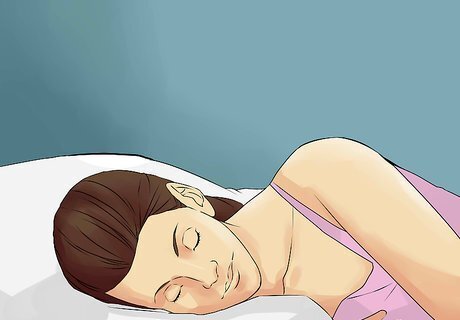
Get enough sleep. Resistance training causes tiny micro tears in the muscle fibers. As you sleep your body repairs these tears.This is the process used to build bigger, stronger muscles. If you are training you need eight hours of sleep every night.
Developing a Healthy Diet

Eat enough protein. Diet is of course important for all around health, but when it comes to building muscle the most important aspect is protein intake. An average amount is 0.8 grams per pound of body weight. For example, if you are that 160 pound person, 160 x 0.8 = 128 grams of protein per day. That may seem like a lot but when you start adding it up you'll be surprised by how much protein you can find in vegetables, nuts, and seeds to supplement or replace your animal protein intake. There are many supplements as well but try to find one without artificial sweeteners. Protein shakes are more likely to be healthier than protein bars.
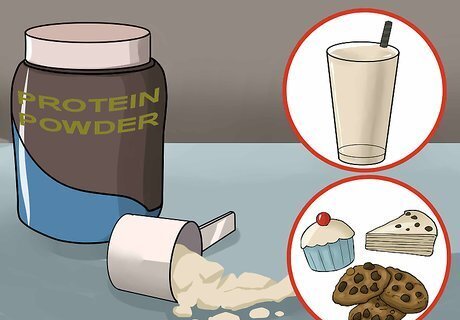
Shake it up with protein powders. One way to get your recommended daily protein is to supplement your diet with protein powders. You can use the powder to make delicious smoothies, shakes, or baked goods.
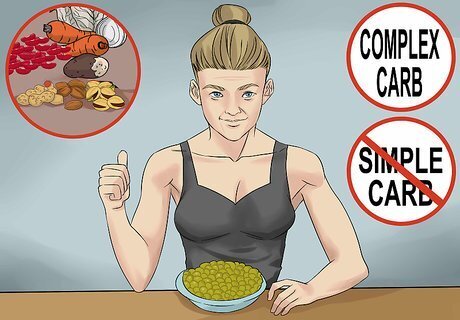
Eat the right kind of carbohydrates. Eating high-glycemic carbs (like white bread and pasta) can raise your blood sugar. This can contribute to weight gain and diabetes. Switch out high-glycemic carbs for low ones, such as those found in peanut butter or apples. There are both simple and complex carbohydrates. Simple carbs are made up of fewer sugar molecules than their complex counterparts. They are a quick source of energy, but are not providing your body with many nutrients or vitamins. These carbs include table sugar, jams, jellies, soft drinks, honey, and maple syrup. Complex carbohydrates provide essential minerals, vitamins, and proteins but also turn into glucose like simple carbs. Complex carbs are much better for you body and can be found in foods like peas, beans, vegetables, and whole grains.

Supplement with vitamins. As our body ages, we lose bone mass and density. It may be beneficial to supplement your diet and exercise with vitamins (like calcium) that can replace what you are using. Always talk to your doctor before adding a supplement to your routine. They can be harmful to your health if taken in too high of dosage or may negatively impact a pre-existing condition.
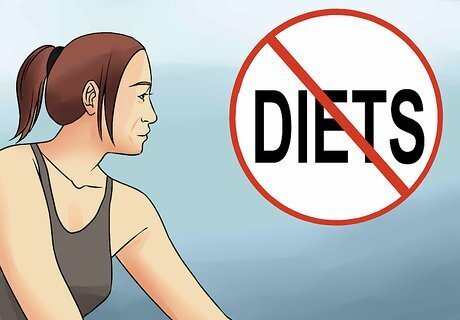
Avoid fad diets. Your goal in gaining muscle is to develop a routine that will work for you. Popular diets go in and out of fashion because they are often not scientifically backed or proven. Avoid these diets by sticking to a medically approved diet and exercise routine.



















Comments
0 comment